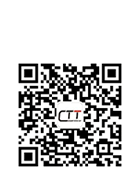On 3 August 2022, UK’s Department of Business, Energy & Industrial Strategy (BEIS) has published notice, proposing to update the list of designated standards for the UK Toys (Safety) Regulations 2011 (S.I. 2011 No. 1881). The proposal is scheduled to be implemented on September 1, 2022 (unless the proposal is withdrawn or amended before this date).
●The updated designation criteria in the proposal are as follows:
No. | Reference of the standard | Superseded specified standard | Date of withdrawal of superseded standard |
1 | EN 71-2:2020 | EN 71-2:2011+A1:2014 | 2022.9.1 |
2 | EN 71-3:2019+A1:2021【1】 | EN 71-3:2019 | |
3 | EN 71-4:2020 | EN 71-4:2013 | |
4 | EN 71-7:2014+A3:2020 | EN 71-7:2014+A2:2018【2】 | |
5 | EN 71-12:2016【3】 | EN 71-12:2013 | |
6 | EN 71-13:2021 | EN 71-13:2014 |
Note 1:The interpretation of clause 7 of the standard should be taken to require that test portions should not be made up of combined materials prior to the migration and analysis stages of the test.
Note 2:For the allowed preservative Climbazole, the presumption of conformity applies up to a maximum allowed concentration of 0.2 % (not: 0.5 %).
Note 3:The limit values in point (a) of Table 2 of clause 4.2 of standard EN 71-12:2016 (i.e. limits for elastomers toys intended for use by children under 36 months and intended or likely to be placed into the mouth) are lower than the limit values to be complied with set in Point 8 of Part 3 of Schedule 2 of Toys (Safety) Regulations 2011 (S.I. 2011 No. 1881). In particular those values are as follows:
Substance | EN 71-12:2016 | Toys (Safety) Regulations 2011 (S.I. 2011 No. 1881) |
N-nitrosamines | ≤0.01 mg/kg | ≤0.05 mg/kg |
N-nitrosatable | ≤0.1 mg/kg | ≤1 mg/kg |
●After 1 September 2022 (unless there are special circumstances), the specified standards under the UK Toy Regulations will be as shown in the table below:
| No. | Designated standards |
1 | EN 71-1:2014+A1:2018 Safety of toys - Part 1: Mechanical and physical properties |
2 | EN 71-2:2020 Safety of toys - Part 2: Flammability |
3 | EN 71-3:2019+A1:2021 Safety of toys - Part 3: Migration of certain elements |
4 | EN 71-4:2020 Safety of toys - Part 4: Experimental sets for chemistry and related activities |
5 | EN 71-5:2015 Safety of toys - Part 5: Chemical toys (sets) other than experimental sets |
6 | EN 71-7:2014+A3:2020 Safety of toys - Part 7: Finger paints - Requirements and test methods |
7 | EN 71-8:2018 Safety of toys - Part 8: Activity toys for domestic use |
8 | EN 71-12:2016 Safety of toys - Part 12: N-Nitrosamines and N-nitrosatable substances |
9 | EN 71-13:2021 Safety of toys - Part 13: Olfactory board games, cosmetic kits and gustative games |
10 | EN 71-14:2018 Safety of toys - Part 14: Trampolines for domestic use |
11 | EN 62115:2005 Electric toys – Safety EN 62115:2005/A2:2011 EN 62115:2005/A11:2012 EN 62115:2005/A12:2015 EN 62115:2005/A2:2011/AC:2011 EN 62115:2005/A11:2012/AC:2013 |
*In addition to the safety standards for electric toys, the updated UK harmonized standards are consistent with the current harmonized standards of the EU Toy Directive. However, toy products exported to the UK (except Northern Ireland) must be affixed with the UKCA logo from 0:00 on January 1, 2023.
CTT Kind tips:
Relevant toy companies exporting to the UK should pay attention to the updated content of this proposal and take corresponding countermeasures before the implementation of this proposal. CTT has rich experience in product testing to help you easily understand whether the product is safe and compliant, welcome to consult.
